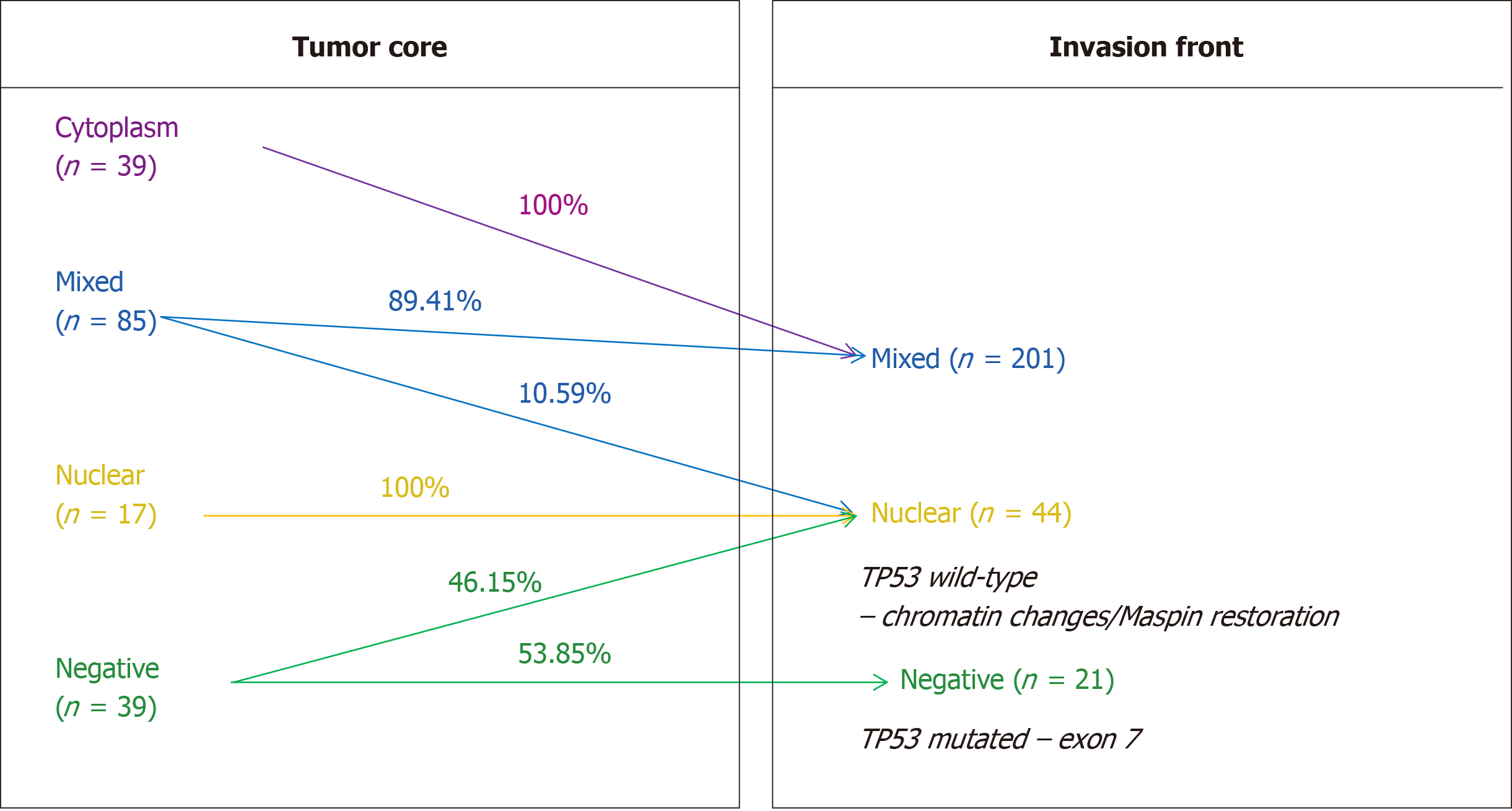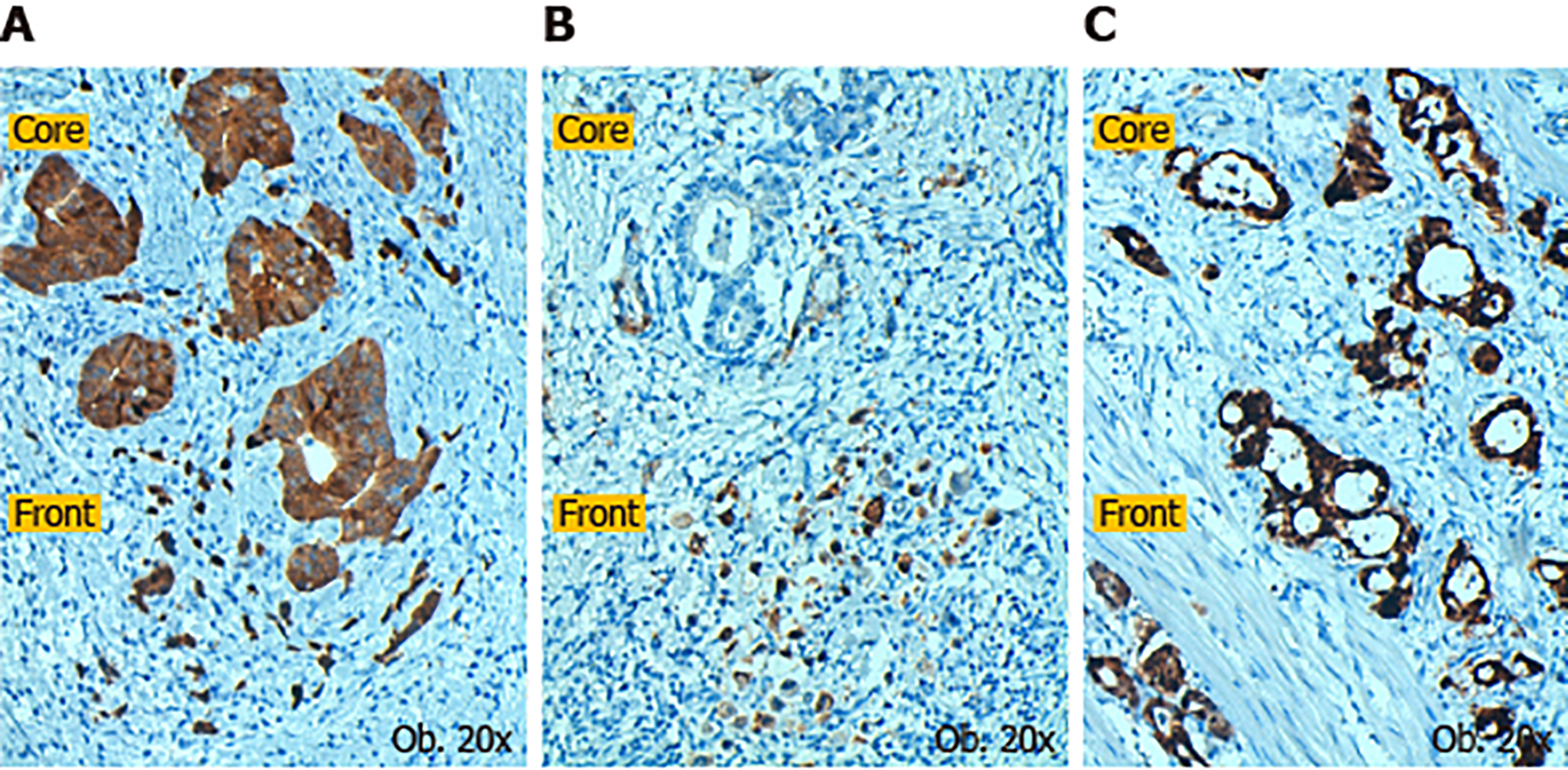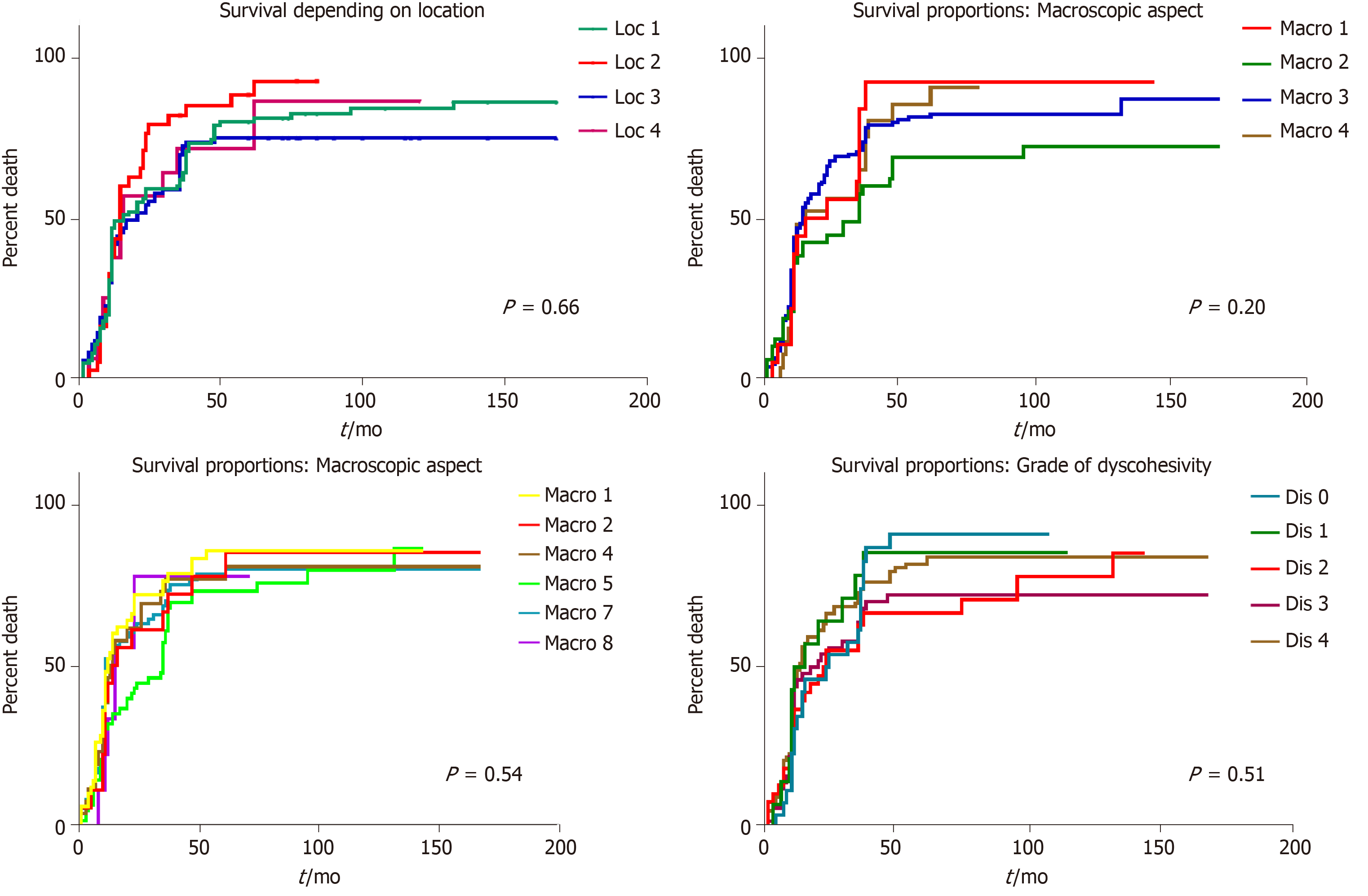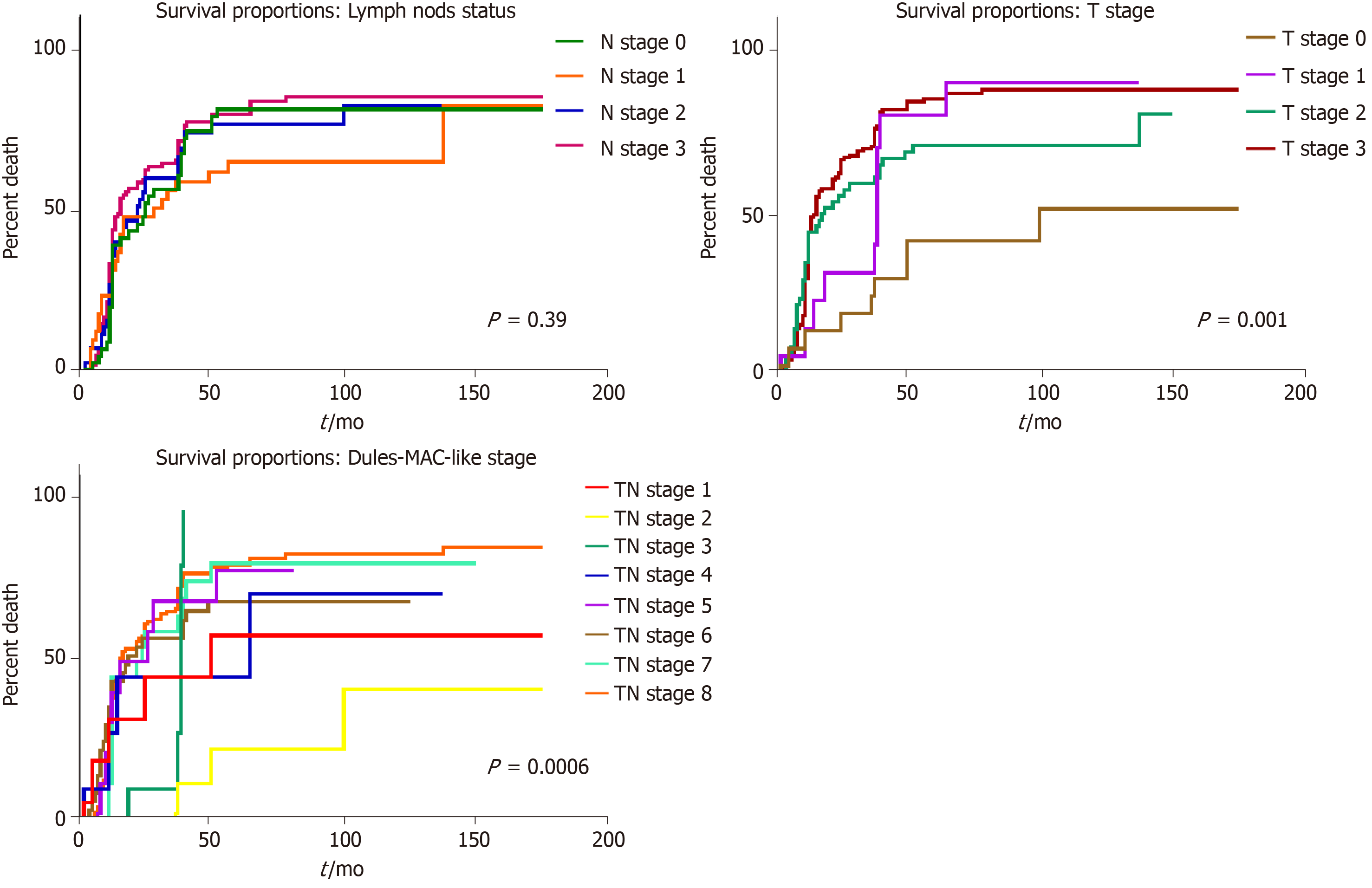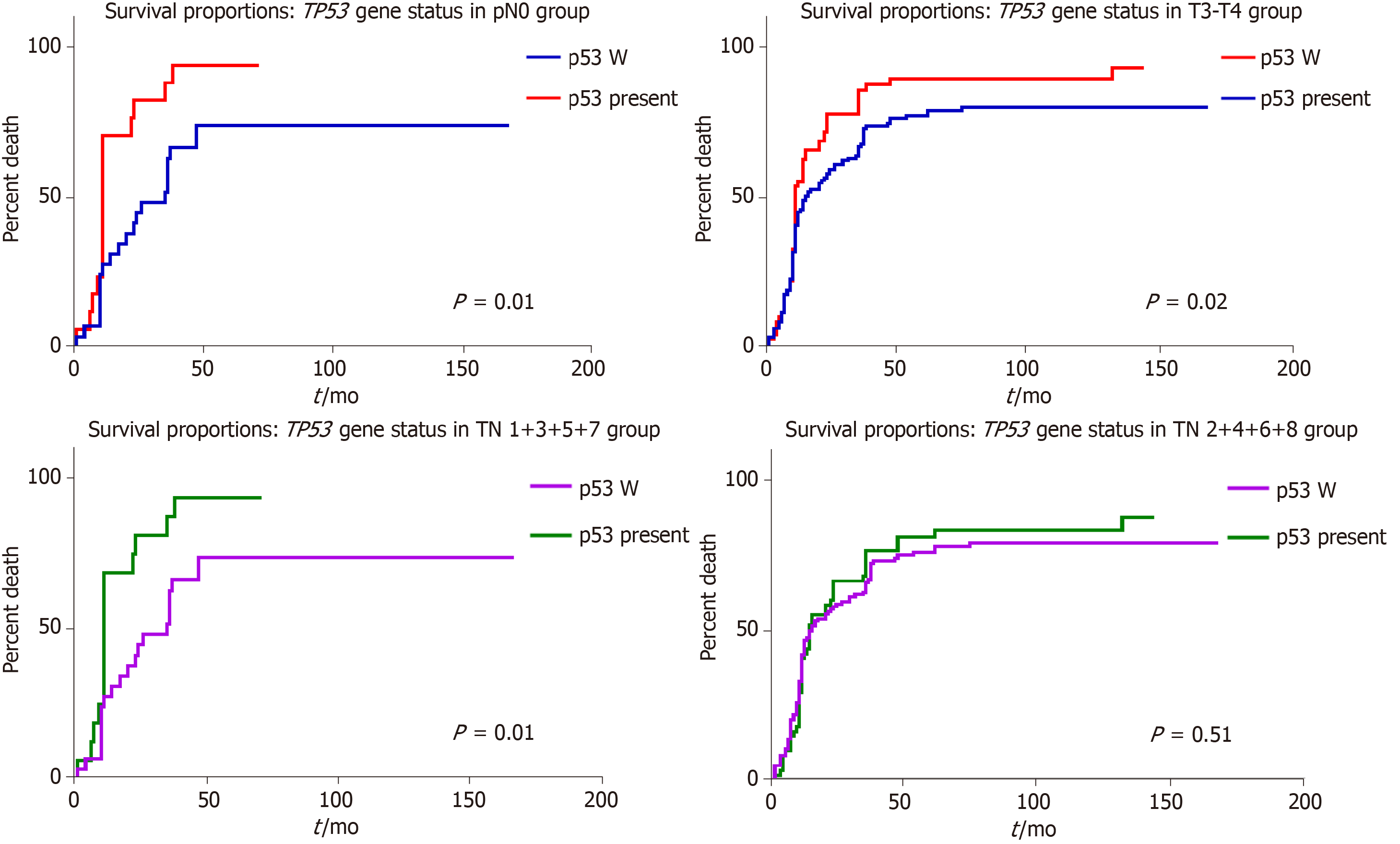Copyright
©The Author(s) 2020.
World J Gastrointest Oncol. Jul 15, 2020; 12(7): 741-755
Published online Jul 15, 2020. doi: 10.4251/wjgo.v12.i7.741
Published online Jul 15, 2020. doi: 10.4251/wjgo.v12.i7.741
Figure 1 In gastric cancer, Maspin nuclear restoration, in the invasion front, can be seen in TP53 wild-type cases, whereas mutations in exon 7 of the TP53 gene induces Maspin negativity.
Figure 2 Gastric carcinoma cases which displayed Maspin nuclear expression in the invasion front (A-C).
A: The cells from the tumor core may have mixed (nucleus+cytoplasm) positivity; B: The cells from the tumor core can be negative, with Maspin nuclear restoration, in the invasion front; C: But, in some cases, nuclear positivity is the predominant immunostain, in both the core and front.
Figure 3 In gastric cancer, overall survival rate is better in males younger than 60 years.
Figure 4 In patients with gastric cancer, overall survival rate does not depend on tumor localization, macroscopic or microscopic aspect or budding degree.
Figure 5 In patients with gastric cancer, the most significant independent prognostic parameter is the depth of infiltration, especially when it correlates with the lymph node status.
Figure 6 In patients with gastric cancer, the immunohistochemical expression of Maspin (0-negative; c-cytoplasm expression; m-mixed expression; N-nuclear positivity) and p53 (0-negative; 1-below 50%; 2-over 50%) does not have independent prognostic value, but wild-type TP53 cases (W) have a slightly longer survival time.
Figure 7 In patients with gastric cancer, wild-type TP53 cases (W) have a longer survival time, compared with mutant TP53 carcinomas, especially in tumors diagnosed before the occurrence of lymph node metastases.
- Citation: Gurzu S, Jung I, Sugimura H, Stefan-van Staden RI, Yamada H, Natsume H, Iwashita Y, Szodorai R, Szederjesi J. Maspin subcellular expression in wild-type and mutant TP53 gastric cancers. World J Gastrointest Oncol 2020; 12(7): 741-755
- URL: https://www.wjgnet.com/1948-5204/full/v12/i7/741.htm
- DOI: https://dx.doi.org/10.4251/wjgo.v12.i7.741









